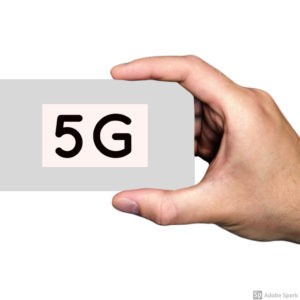AT&T’s 5G Network Grows to 19 Cities. Where’s the 5G Phone?

AT&T and Verizon have activated their 5G mobile network in a handful of cities across the US. Verizon’s 5G network is live in Chicago and Minneapolis, while AT&T added another 5 cities to its growing list. This list now boasts 19 locations. Verizon plans to expand its network to 30 cities by the end of this year. Wireless telecom companies have worked very hard to get their 5G networks live well ahead of their self-imposed deadlines, and they deserve to be commended.
That being said, there is still a lot of work to do.
Patchy Coverage
In the cities where 5G network is currently live, it is not available in all the places. It works only in some parts, and wireless providers have not provided any kind of maps on where the network is currently available. Presumably, they are adding the necessary infrastructure in these cities and expanding the coverage areas within the city limits. However, at this point, 5G network connectivity is neither uninterrupted nor seamless.
Also, while speeds of 450Mbps to 1Gbps were promised, the actual speeds that users experienced were closer to 150Mbps to 300Mbps. That still is a significant step forward from the 4G speeds. As the coverage grows, these speeds are expected to hit the promised 1Gbps speeds in the coming months.
The Devices
That brings us to the last piece in the 5G puzzle – 5G-enabled smartphones.
At present, both Verizon and AT&T are selling the so-called, 5G smartphone – Motorola Moto Z3. However, it’s not a true 5G phone. The out-of-the-box 4G phone, which costs $480 requires a 5G mod, which costs another $199.99, to be able to tap into the 5G network.
Currently, there is no true 5G smartphone on the market. However, manufacturers are racing against time to launch their 5G device as early as possible. In the US, both Verizon and AT&T are slated to sell the Galaxy S10 5G later this year. Although the phone will be 5G-enabled out of the box, it will still be able to connect only to the mmWave 5G network, which comes with a significantly limited reach. AT&T plans to deploy its “sub-6” later this year, which will have a much wider coverage and reach. The new Galaxy S10 5G will not have the modem to connect to the sub-6 network and will only act as an intermediate phone between 4G and true 5G phones. The first fully 5G-capable phone supported by the networks will likely be Samsung’s second 5G phone, which is due for later this year.
So, yes. 5G is finally here, but it does not mean that the wait has ended. It just means that the wait for a 5G phone has only begun. The good news is that it is increasingly likely that you’ll get a true taste of 5G by the end of this year.